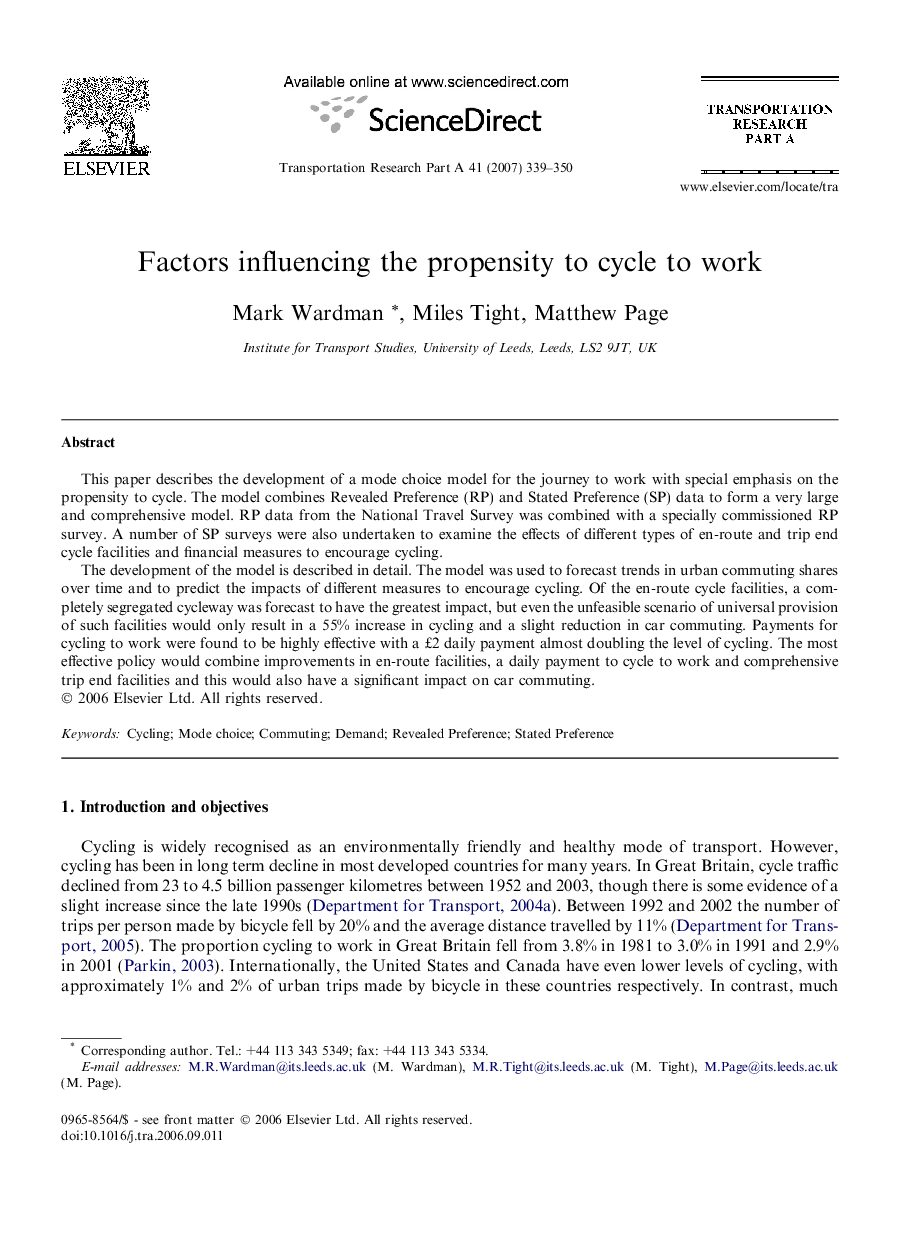| Article ID | Journal | Published Year | Pages | File Type |
|---|---|---|---|---|
| 311679 | Transportation Research Part A: Policy and Practice | 2007 | 12 Pages |
This paper describes the development of a mode choice model for the journey to work with special emphasis on the propensity to cycle. The model combines Revealed Preference (RP) and Stated Preference (SP) data to form a very large and comprehensive model. RP data from the National Travel Survey was combined with a specially commissioned RP survey. A number of SP surveys were also undertaken to examine the effects of different types of en-route and trip end cycle facilities and financial measures to encourage cycling.The development of the model is described in detail. The model was used to forecast trends in urban commuting shares over time and to predict the impacts of different measures to encourage cycling. Of the en-route cycle facilities, a completely segregated cycleway was forecast to have the greatest impact, but even the unfeasible scenario of universal provision of such facilities would only result in a 55% increase in cycling and a slight reduction in car commuting. Payments for cycling to work were found to be highly effective with a £2 daily payment almost doubling the level of cycling. The most effective policy would combine improvements in en-route facilities, a daily payment to cycle to work and comprehensive trip end facilities and this would also have a significant impact on car commuting.
